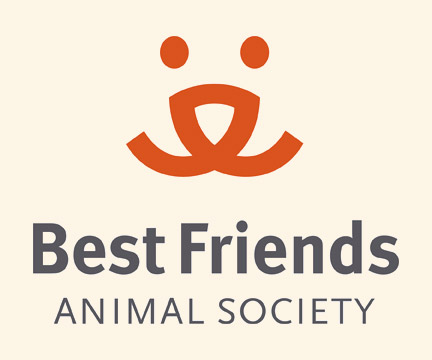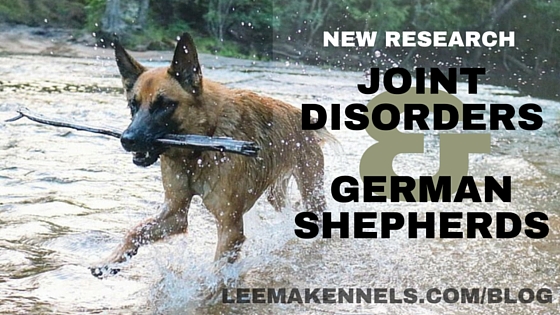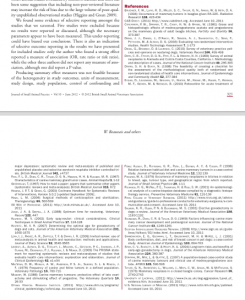It was with surprise, and pleasure, I received an invitation to the Companion Animal Shelter Summit held in Adelaide, in Parliament House. This was a new venture, supported by diverse politicians (Susan Close from the Labor Party, Tammy Franks from the Greens, and Michelle Lensink form the Liberal Party), and, pleasingly, gaining attendance from a number of different animal welfare organisations. This function promoted itself to be, and was, a great networking opportunity.
I attended this function on the 10th of October and share my notes on the program below. I must admit that I neglected to take detailed notes on many ‘cat things’ (not a surprise), but I did make some notes and did include them below.

Dr Michael Moyer and Mr Tim Vasudeva at the Companion Animal Shelter Summit.
They keynotes speaker for the Summit was Michael R Moyer, a veterinarian practicing in Pennsylvania, with an extensive history in animal welfare, and what he approximates to be 20 years experience in sheltering practices.
Sheltering and Animal Welfare in the USA
Moyer began by describing the many organisations that function in the USA. Like the ASPCA, an old organisation with roots in equine welfare, who have a turn over of $189million in gifts and donations on an annual basis through public awareness campaigns. A lot of this money goes into things like ‘Animal Cops’ (they’re behind the TV show). They do run a shelter and hospital for companion animals, which holds about 3,200 animals.
Moyer also looked at the HSUS, who earns itself $233million on an annual basis through TV advertisements and mailouts. They are a highly ‘visible’ organisation, dipping their fingers into many pies. They do not run shelters for domestic anials, but have about 6-8 wildlife sanctuaries across the country.
The American Humane Association is a little novel in this day-and-age as it looks at the humane treatment of animals and children. This organisation is largely unknown by the public, despite it placing “No animals were harmed” labels at the end of movies. Their focus is not so much on companion animals, but producing animals on farms and accrediting these facilities. They gain about $22million in donations annually.
 I included Best Friends Animal Society’s logo on the left here because I just think it’s one of the most adorable logos I’ve ever seen. BFAS often focusses its attention on ‘crisis’, such as hurricanes or other disasters, and providing boarding for animals in times of evacuations. Through these disasters, they seek fundraising, leading to an intake of about $53million a year. They often frequently take on high-profile cruelty cases. They have a 1000 dog and cat animal sanctuary (with some large animals) and often have animals in long-term housing scenarios. They have recently taken over No Kill Los Angeles, including off site adoption sites and with 14 different rescues using these sites.
I included Best Friends Animal Society’s logo on the left here because I just think it’s one of the most adorable logos I’ve ever seen. BFAS often focusses its attention on ‘crisis’, such as hurricanes or other disasters, and providing boarding for animals in times of evacuations. Through these disasters, they seek fundraising, leading to an intake of about $53million a year. They often frequently take on high-profile cruelty cases. They have a 1000 dog and cat animal sanctuary (with some large animals) and often have animals in long-term housing scenarios. They have recently taken over No Kill Los Angeles, including off site adoption sites and with 14 different rescues using these sites.
Moyer mentioned Humane Alliance, that focusses on desexing surgeries on a large scale – about 4 million pets being sterilised in the USA in a year, including transport to and from their desexing facilities. The desexing they provide is of high quality and they also have unique, high-volume training camps for vets.
Additionally, Petsmart Charities was mentioned. Even here in Australia, we have heard of ‘Petsmart’ (the pet store), but what we don’t hear about how they encourage customers to donate on purchase. Moyer described Petsmart Charities as ‘data driven’ in the type of recommendations they make for life saving in shelters. Petsmart Charities earn about $79 million, mostly from customers, annually.
Overall, Moyer described Animal Sheltering in the USA as:
- Highly localised, highly fragmented, highly variable in success.
- Often funded by municipality and not for profit runs it.
- County shelters in more regional areas.
- Large numbers of shelters in USA – 3500-5000 individual shelters.
- The term ‘SPCA’ is used by counties and the public is confused because they think it relates to the ASPCA.
- Regional variation in scope of challenges/success – climate/culture has an impact – as there are differences across the country with free ranging dogs and they care of dogs, geographical differences.
When someone brought up PETA, he called their sheltering an “active euthanasia program” instead of a shelter, as 88% of their intakes are euthanised. He clarified, though, that sheltering isn’t really PETA’s thing and they’re more into other animal rights agendas.
Across the USA, there are many universities teaching shelter medicine alongside their veterinarian studies.
Pediatric Desexing
Part of Moyer’s talk was surrounding pediatric desexing, which he defined as desexing from 6-16 weeks of age. He noted that many recommend that desexing take place at 6-8 months of age, but there is no evidence to back up this being the ‘best time’ for desexing. Indeed, animals are still quite young at 8 months, so arguably it’s still a pediatric desexing procedure then, too!
While some idnividuals advocate that large breed dogs should be desexed at 14-18 months, Moyer saw “no reason” for this to occur, as surgery is more complex and serious the older the dog is. Moyer poo-pooed the idea that someone with (his example) a Neopolitian Mastiff may want the dog to look as substantial as it would be given the time to mature, and thought the other health benefits were far more pressing.
His main focus was on research that indicates that desexed animals live longer. He does not think urinary incontinence is a big deal (you can medicate it), and made reference to some rare types of cancers being less common in entire dogs, but concluded that this was because they died earlier so never got the chance to have cancer.
Moyer described some guidelines regarding the surgeries themselves:
- Pediatric desexing should avoid and/or prevent:
- hypothermia (from premed precautions need to be in place!),
- long procedures,
- fasting (controversially, Moyer suggests that young animals are not fasted before a surgery),
- and NSAIDS.
- In dogs, anaethetic is riskier if there is mask induction, xylazine, or injectable induction with halothane maintence.
- In cats, intubation increases the risk of death by 3 times!
- Young animals should be fed after surgery.
- Pediatric desexing should house litters together before and after.
- Hygiene is importnat, including true sterile hemostats.
- Moyer recommended an inguinal tattoo (which is not common practice in Australia).
- Pediatric desexing: Consider autoligation, in dogs and cats, males and females!
- Flank/abdomen spays a matter of preference.
Moyer included several studies regarding desexing in dogs and cats:
Moyer talked about applying a process orientated approach to surgery. He made reference to ‘The Checklist Manifesto’ by Atul Gawande. You may be surprised to know that there is evidence that checklists improve patient outcomes in surgery. That is, less patients die or experience complications if checklists are in place. Even something as simple as requiring staff to introduce themselves to one another can improve patient outcomes. For this reason, checklists are good and should be implemented!
The benefits of taking a process orientated approach to surgery include:
- Improved consistency and efficiency
- Patient care is improved as it is process based, quality assured
- Facilitates training and cross training
- Facilitates leadership development
- Facilitates continuous improvement – with individuals questioning every step of a process, assessing themselves and one another, and being comfortable to discuss problems.
- Documented processes in place
The alternative to SOPs are: inconsistency, neglect, inefficiency, stagnation, tribal knowledge, and so forth. Moyer argued that not following a SOP should be grounds for discharge (while following them well should be grounds for promotion and other rewards).
With SOPs in place, mass-desexing is done effectively and with good patient outcomes. Moyer wants to dispel the ‘chop shop’ myth – if someone is desexing a lot of animals on a daily basis, they’re going to get very good at it.
Intake protocols for shelter, foster and rescue: Vaccination
Moyer emphasised the importance of shelters vaccinating animals on intake. Any pet that is at risk of acquiring a disease (including pregnant animals) should be vaccinated against it on intake. The particular diseases that are relevant will vary between facilities.
Dogs and cats respond to shelter environments, and pathogens, in different ways. For cats, many have latent viruses on intake to a facility and, because of the stress of being held in a shelter environment, they develop illnesses. Dogs on the other hand are normally healthy when they enter the facility, but they develop diseases from exposure to pathogens within the shelter environment.
Moyer joked that the ideal time to vaccinate incoming animals is two weeks before they enter the facility. Of course, that’s not possible (though it suggests that community education and discounted vaccination in the community may have a role in bettering shelters). Failing vaccination before intake, the recommendation is that animals get vaccinated within 30 minutes of entering a facility.
It’s a matter of weighing up risks: surrenders are at a low risk, in terms of disease, while strays are at a higher risk. Young puppies and kittens are the greatest risk of contracting disease.
These vaccinations should take place with modified live products that have been properly stored and reconstituted.
In Australia, we do not have a problem with rabies. For this reason, we do not have animal sheltering intertwined with public health. Moyer described how, in the USA, an interest in public health has funded much of animal control.
Intake protocols for shelter, foster and rescue: Other
Moyer argued that many shelters should have particular intake areas and protocols, with intake staff, an intake processing area, and a ‘receiving area’. But these spaces have to be appropriate. He used an example of intake-kennels where dogs had nose-to-nose contact through the fence, meaning diseases were spread among the 12 or so current intake animals in no time, and then spread to the rest of the shelter population.
Intake procedures should include:
- health assessment
- identification (collar/tag/microchip)
- vaccination
- anti-paraciticies
- adoption status assignment (e.g. is it on stray hold or available for adoption immediately?)
- data capture
- schedule follow up needs (e.g. a second vaccination? desexing?)
- for kittens, Pen-G injection
Shelters/Rescues/Fostering Interconnectedness
While Moyer has been in the sheltering industry for the last 20 years, he describes the recent popularity of rescue to be ‘an explosion’. Rescues are great for shelters: they prevent surrenders and save impounded animals (especially impounded animals that need rehabilitation and special adoptive homes). This work of rescue has seen a reduction in shelter intakes in many areas.
Shelters are typically the largest resource in the community. They offer opportunities for community engagement including collaborative adoption events. They hold a lot of resources and data.
Moyer considers fostering to be ‘an offsite location of the shelter’. One of the key challenges with fostering is ‘staying in touch’ – this can sometimes be rectified by providing a list of dates for the animal to come back to the shelter (for example, coming back for surgery, vaccination, of adoption events). Moyer also advocated the use of ‘foster to adopt’ in some settings. Foster carers need to be fully informed about the disease risks of bringing in foster animals, especially to their existing pets.
In contrast, ‘rescue’ is a broad term that covers networks of kennelling and fostering in an external network. A ‘transfer to rescue’ is a (desirable) outcome for a shelter. They are a big potential resource and often can specialise in pets at high risk of euthanasia – and, by taking them, effectively reduce euthanasia.
Neonatal kitten care and medicine – and cats
Moyer talked about Austin Pets Alive Bottle Baby Program, and its high density housing of high need neonatal kittens. The program vigorously and positively recruits volunteers, and these volunteers are staffed around the clock. (Staffing numbers are calculated from the intake data of past years.) Obviously, this is a big job, and there are coordinators for both foster and adoption.
The program uses a ‘all in, all out’ batching system, where there are three rooms which fill and empty in a week, and then that one room has an entire clean. This reduces the spread of disease.
Moyer believes kittens are easy to place in new homes, because they’re cute and just need a little bit of marketing.
Moyer explained how the unowned cat population produces the cat population (as most owned cats are desexed), so it’s targeting this unowned population which should be the focus of number-reduction efforts.
Shelters need to provide intake alternatives for free ranging cats.
Moyer recommended that cats are cleaned ‘in residence’, so there is less stress for the cat and there is less spread of disease. There is no reason for a cat to have a completely disinfected cage every day.
No Kill Communities
A shelter’s capacity describes a shelter’s resources, associated rescue’s resources, and their foster resources. In that way, the life saving capacity of the community is interlinked with the shelter facility. Moyer doesn’t like to use the term ‘no kill’ to describe facilities but, rather, communities. Despite the fragmented nature of the animal rescue/sheltering system, it is still ultimately one system. In this way, it is a community working towards the ‘no kill’ goal, rather than an individual facility’s pursuit.
Homeless pets are a social problem. Not vetrinarian, not biological, not legal. As homeless pets is a community issue, then community and social solutions are the best. If political support is available use it.
Extra thoughts from Moyer:
- Moyer described dogs as having a ‘supply/distribution mistmatch’ – not an overpopulation problem.
- In Moyer’s mind, there is a ‘native rate’ of animals entering any shelter. It’s not a high number, but it’s inevitable that shelters will have an intake of animals, as that is the role the community.
- Moyer dismisses some individual’s focus on adoption returns, as the number of animals returned is a negligible number.
- “Make rehoming the primary source of pet acquisition” and a lot of sheltering problems get easier. This includes removing barriers to adoption, like price.
- Make return to owner easier – that is, impounded animals should easily be able to get home.
- Make surrender harder. This means making it less necessary and less attractive (e.g. required surrender appointments).
- Asking this question pre surrender: “What would you need for you to keep your pet?” and working to supply this. (Like Downtown Dog Rescue.)
- Many people don’t realise that their veterinarian can euthanise pets. It seems silly, but many people would choose this option if they knew it was available, over ‘surrender for euthanasia’.
- And a neat idea: reward transport volunteers with naming opportunities!
- Leasdership must: inspire change, incetizise staff and volunteers, instutionalise success, innvoate collaborative models
Barriers to life saving
I was in a group that broke away to discuss ‘barriers to life saving. The questions included “What is dying? Why? What can be done about it?”
What is at highest risk of euthanasia? Our group suggested:
- council pound
- aggressive
- anti social
- medium sized or bgigger
- bull breeds
- untrained
- unsocialised
- senior dogs – greater than 8 years
- ‘escape artists’
- health conditions
- request euthanasia
- fearful and stressed
- working dogs that don’t work – including greyhounds
- kitten season
Moyer (who we were lucky enough to have chairing our focus group) suggested that we need shared reporting/data and greater trasnparency. There is no state requirement for this type of record keeping. Some groups are ‘concerned about backlash’ (if I may personally comment… if groups are doing things that may produce backlash, then perhaps they should cease to do things that create backlash…), so perhaps data could be aggregated to prevent this problem.
Reasons for surrender:
- rental isues
- behaviour – sep anxiety, destructive, untrained/hyperactie, escapes, aggression
- deceased
- not enough time
- council number enforcement
- life changes – including relationship breakdown or pregnant/new baby
What animals are most at risk of being unclaimed?
- bully breeds
- kelpies
- lack of info on process
- lack of finances
- untrained
- lag for cat owners (i.e. they wait a few more days to start looking for a lost cat)
Just as a note, the suggestions above were just the result of brainstorming of the group, and there was no need to substantiate individual suggestions to these lists. What I am saying is this is ‘ideas only’ stuff, and places to research more, not to accept as gospel.
Found Pets App
Tim Vasudeva from RSPCA SA (formally AWL NSW) spoke about his ‘Found Pets App’.
He briefly mentioned the importance of using visually appealing images to capture the attention of adopters, and suggested promoting animals on Facebook and PetRescue on Fridays (so they can come look at those pets over the course of the weekend).
Found Pets is an app that aims to ‘fufil a gap’ for pet owners, as we, as a community, are ‘bad’ at supporting people through the stressful time of losing a pet. The community needs more information about the reclaim process.
The Found Pets app is for all animals, and it is a ’1 minute’ process for Animal Management Officers/Rangers to upload an animal. The ranger uploads a photo, specifies the species, and the suburb that the animal was found (and the app adds the date, council contact details, and relevant pound contact details.
Found Pets is a website and a mobile application.
Owners can set the app so it alerts if a relevant pet (i.e. one amtching their lost pet’s description) is found.
It saves councils money. It saves pet owners money.
It’s a $30 per user per month expense for council. (The funds go to the app developer, not the RSPCA.)
Further reading from the Paw Project: CASS: Companion Animal Shelter Summit

![]() It’s very exciting how there is growing research on desexing in dogs, including age of neutering, and its implications on health. In the past, I have blogged on how desexing in German Shepherds is linked to reactivity. The latest study, published last month, looks at bone disorders, cancers, urinary incontinence, and pyometra in German Shepherds.
It’s very exciting how there is growing research on desexing in dogs, including age of neutering, and its implications on health. In the past, I have blogged on how desexing in German Shepherds is linked to reactivity. The latest study, published last month, looks at bone disorders, cancers, urinary incontinence, and pyometra in German Shepherds.
 The
The 



 I included Best Friends Animal Society’s logo on the left here because I just think it’s one of the most adorable logos I’ve ever seen. BFAS often focusses its attention on ‘crisis’, such as hurricanes or other disasters, and providing boarding for animals in times of evacuations. Through these disasters, they seek fundraising, leading to an intake of about $53million a year. They often frequently take on high-profile cruelty cases. They have a 1000 dog and cat animal sanctuary (with some large animals) and often have animals in long-term housing scenarios. They have recently taken over No Kill Los Angeles, including off site adoption sites and with 14 different rescues using these sites.
I included Best Friends Animal Society’s logo on the left here because I just think it’s one of the most adorable logos I’ve ever seen. BFAS often focusses its attention on ‘crisis’, such as hurricanes or other disasters, and providing boarding for animals in times of evacuations. Through these disasters, they seek fundraising, leading to an intake of about $53million a year. They often frequently take on high-profile cruelty cases. They have a 1000 dog and cat animal sanctuary (with some large animals) and often have animals in long-term housing scenarios. They have recently taken over No Kill Los Angeles, including off site adoption sites and with 14 different rescues using these sites.